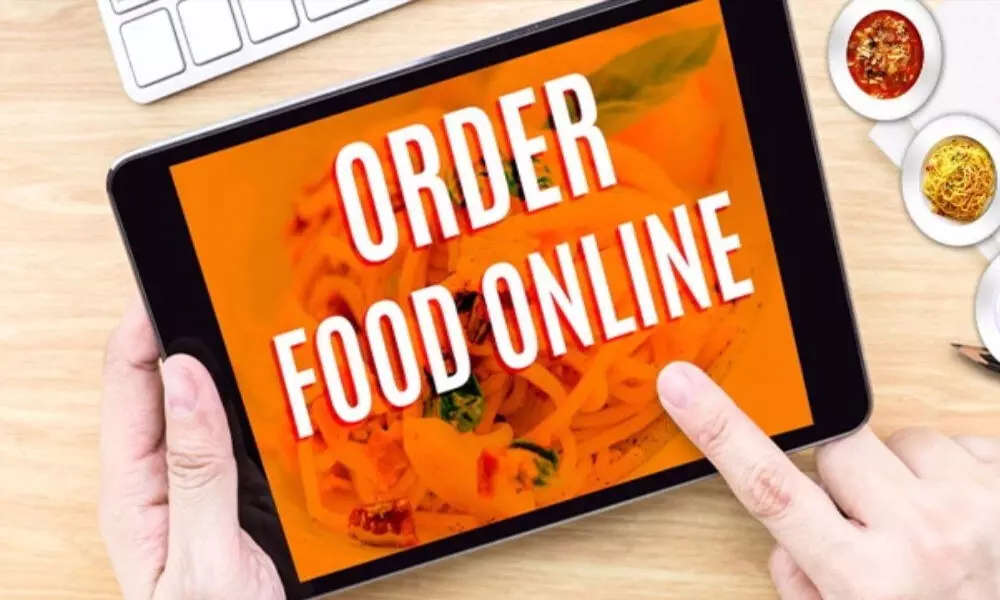Global online food delivery mkt may reach $192-bn level in 2025
The food delivery market grew to $126.91 bn in 2021 at CAGR of 10.3%
image for illustrative purpose

With the new normal post Covid-19 the global online food delivery services market grew from 07 billion in 2020 to $126.91 billion in 2021 at a compound annual growth rate (CAGR) of 10.3 per cent. The growth is mainly due to the companies resuming their operations and adapting to the new normal while recovering from the Covid-19 impact, which had earlier led to restrictive containment measures involving social distancing, remote working, and the closure of commercial activities that resulted in operational challenges. The market is expected to reach $192.16 billion in 2025 at a CAGR of 11 per cent.
The online food delivery services market consists of sales of online food delivery services and related services primarily for household consumption. The online food delivery services market includes all companies involved in distributing the packages received from hospitality establishments and have an online portal or an application for their sales.
The food can be either ready-to-eat food or food that has to be specially prepared for direct consumption. Online food delivery service has two segments, restaurant-to-consumer delivery includes delivery of order directly by the concerned restaurant, whereas, Platform-to-consumer segment involves online delivery services that deliver orders of partner restaurants.
The global online food delivery services market covered in this report is segmented by type into platform-to-customer, restaurant-to-customer; by channel type into websites, mobile applications and by payment method into cash on delivery, online payment.
The regions covered in this report are Asia-Pacific, Western Europe, Eastern Europe, North America, South America, Middle East and Africa.
Cost of supply chain and logistics will be the key restraint for the online food delivery services market. This cost includes the cost incurred for order fulfilment, delivery cost, adjusting business resources to dynamic market demand and last-mile connectivity.
Besides, there are costs of cardboard boxes for packaging, gas, mileage and the cost for hiring a driver. The supply chain and logistics has to be in place in order to avoid the spoilage of products with limited shelf life.
According to the report by Capgemini, in 2019, the retailers could lose up to 26 per cent of their profit if they fail to upgrade their logistics system to ensure on-time delivery despite the increased online grocery system. Therefore, the costs incurred by the supplier side may restrain the growth of the online food delivery services market. In January 2020, Zomato, an Indian food delivery services company, has acquired Indian operations of Uber Eats for $350 million in an all-stock transaction. The combined entity of Zomato and Uber Eats India is expected to corner more than a 50-55 per cent market share in terms of the number and value of orders.
Uber Eats is an online food delivery services vertical of Uber, a US-based ride-hailing company. An increase in smart phone users has given a boost to online food delivery services worldwide. Smart phone users are the primary online shoppers for the F&B industry and an increase in the number of smart phone users reflects a potential increase in online shopping for food and beverages.
The world F&B e-commerce users reached 1.5 billion in 2019 and are expected to grow by 800 million, with an average of 25 per cent y-o-y growth, by 2024. Indian food delivery platform, Zomato, has 80 million monthly active users and has set targets of reaching 20 million over the next few years. Hence increase in smartphone users and internet penetration is driving growth in online food delivery services.
Upgradation of the distribution network to a more decentralized system, Distribution 4.0, is trending in the food delivery services market. In Distribution 4.0, suppliers partner with multiple players for the best market coverage between urban and rural markets, focusing their efforts on marketing, branding, and in-store merchandising to create best-in-class shopper experience.
They are likely to partner with aggregators, e-comm delivery companies, rural distribution companies, and distribution arms of modern trade to drive coverage. E-commerce aggregator Amazon, has announced plans to team with many small scale businesses, retail outlets, and rural supermarkets, to increase their last-mile connectivity. Therefore, the trend of Distribution 4.0 is envisioned to bring in some positive effects on the online food delivery services.

